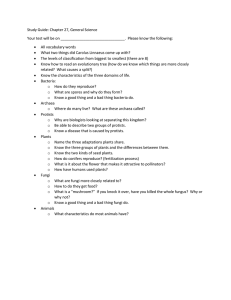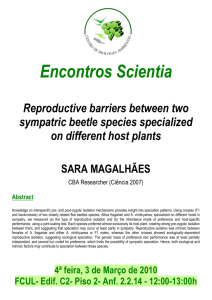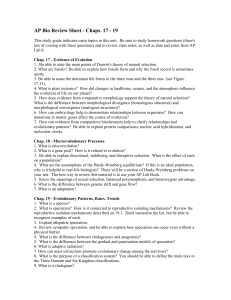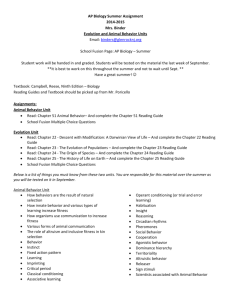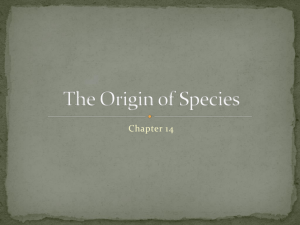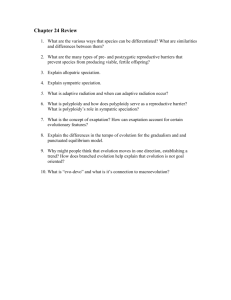BIOL 1005 – Concepts of Biology DISCLAIMER
advertisement
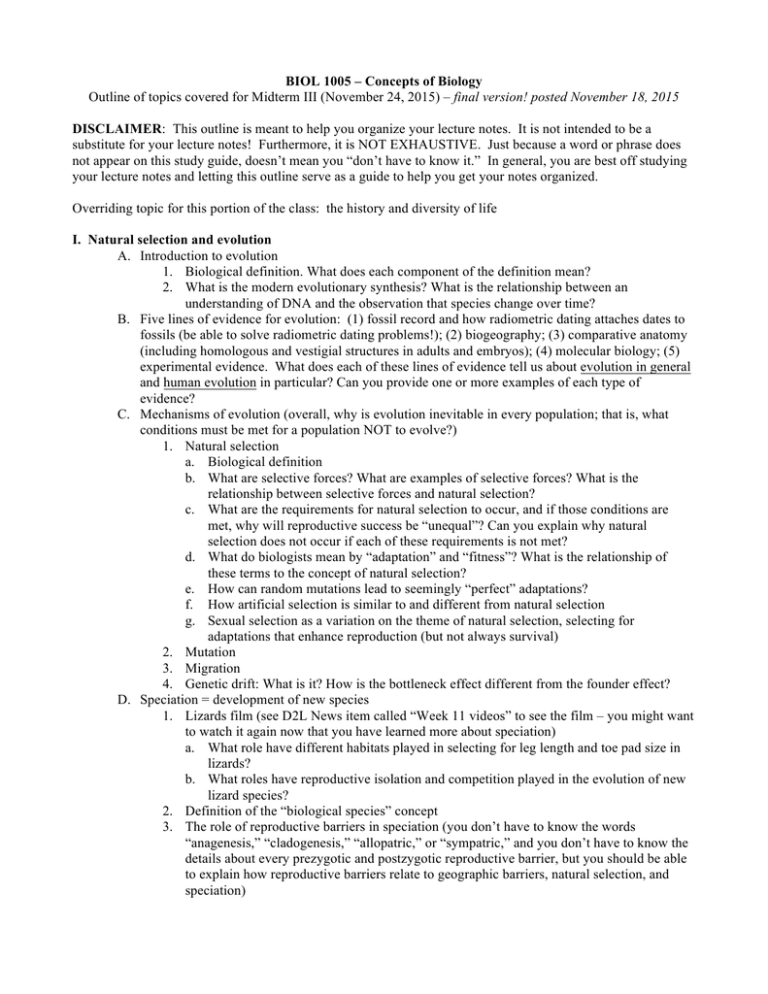
BIOL 1005 – Concepts of Biology Outline of topics covered for Midterm III (November 24, 2015) – final version! posted November 18, 2015 DISCLAIMER: This outline is meant to help you organize your lecture notes. It is not intended to be a substitute for your lecture notes! Furthermore, it is NOT EXHAUSTIVE. Just because a word or phrase does not appear on this study guide, doesn’t mean you “don’t have to know it.” In general, you are best off studying your lecture notes and letting this outline serve as a guide to help you get your notes organized. Overriding topic for this portion of the class: the history and diversity of life I. Natural selection and evolution A. Introduction to evolution 1. Biological definition. What does each component of the definition mean? 2. What is the modern evolutionary synthesis? What is the relationship between an understanding of DNA and the observation that species change over time? B. Five lines of evidence for evolution: (1) fossil record and how radiometric dating attaches dates to fossils (be able to solve radiometric dating problems!); (2) biogeography; (3) comparative anatomy (including homologous and vestigial structures in adults and embryos); (4) molecular biology; (5) experimental evidence. What does each of these lines of evidence tell us about evolution in general and human evolution in particular? Can you provide one or more examples of each type of evidence? C. Mechanisms of evolution (overall, why is evolution inevitable in every population; that is, what conditions must be met for a population NOT to evolve?) 1. Natural selection a. Biological definition b. What are selective forces? What are examples of selective forces? What is the relationship between selective forces and natural selection? c. What are the requirements for natural selection to occur, and if those conditions are met, why will reproductive success be “unequal”? Can you explain why natural selection does not occur if each of these requirements is not met? d. What do biologists mean by “adaptation” and “fitness”? What is the relationship of these terms to the concept of natural selection? e. How can random mutations lead to seemingly “perfect” adaptations? f. How artificial selection is similar to and different from natural selection g. Sexual selection as a variation on the theme of natural selection, selecting for adaptations that enhance reproduction (but not always survival) 2. Mutation 3. Migration 4. Genetic drift: What is it? How is the bottleneck effect different from the founder effect? D. Speciation = development of new species 1. Lizards film (see D2L News item called “Week 11 videos” to see the film – you might want to watch it again now that you have learned more about speciation) a. What role have different habitats played in selecting for leg length and toe pad size in lizards? b. What roles have reproductive isolation and competition played in the evolution of new lizard species? 2. Definition of the “biological species” concept 3. The role of reproductive barriers in speciation (you don’t have to know the words “anagenesis,” “cladogenesis,” “allopatric,” or “sympatric,” and you don’t have to know the details about every prezygotic and postzygotic reproductive barrier, but you should be able to explain how reproductive barriers relate to geographic barriers, natural selection, and speciation) II. III. 4. Gradualism vs. punctuated equilibrium as two hypotheses for the pace of speciation over long periods of time; why would gradualism apply in some circumstances, and punctuated equilibrium apply in others? 5. Reading an evolutionary tree: speciation events, clades, nodes, and common ancestors Origin and History of Life A. Timeline of the major events in the evolution of life (how do we know Earth’s age?) B. Probable stages in the origin of the first life forms; what evidence do we have for these events? Diversity of Life A. What are the three domains of life, and how are they related to the kingdoms and phyla? B. Prokaryotes: domains Bacteria and Archaea 1. Examples of, and reason for, the enormous metabolic diversity among prokaryotes 2. Similarities/differences between domains Archaea and Bacteria 3. “Extreme” habitats where archaea live 4. Importance of bacteria and archaea to the history of life, to humans, and to ecosystems C. Eukaryotes 1. Evolution of eukaryotes: membrane infolding (internal membranes) and endosymbiosis (chloroplasts and mitochondria); evidence for each theory 2. Differences between unicellular, colonial, and multicellular organisms. How might multicellularity have evolved, and what evidence supports the hypothesis? 3. Protists (many kingdoms) a. Characteristics that all protists share; why can’t we consider Protists as a single kingdom? b. Examples of (and explanation for) the metabolic diversity among protists c. Characteristics and examples of algae, slime molds, and protozoa 4. Kingdom Fungi a. Characteristics of fungi b. How fungi acquire their food c. The role of hyphae, mushrooms, and spores in the fungal life cycle d. Why fungi are important: decomposition; commercial uses; cause disease (in plants and animals); symbiosis (mycorrhizae and lichens – what are those?) 5. Kingdom Plantae a. Characteristics of land plants, and evidence supporting the hypothesis that plants descended from green algae b. How each of the following land plant adaptations contributes to survival and/or reproductive success on land: cuticle, stomata, vascular tissue, lignin, pollen, seeds, fruits. Which plants have each adaptation? c. Four major groups of plants: mosses, ferns, gymnosperms (conifers), angiosperms. What are the characteristics, adaptations, reproductive features, and habitats of each? (Use the table I handed out in class to help you see the patterns in characteristics; the book’s summary table may be useful as well) d. Why animals need plants and why many plants need animals. What is the difference between pollination and seed dispersal, and how is each important to reproductive success? 6. Kingdom Animalia a. Characteristics of animals b. Nine animal phyla: sponges, cnidarians, flatworms, mollusks, annelids, nematodes, arthropods, echinoderms, chordates (use the table from class to help you see the patterns in the characteristics of each clade; figure 17.38 may be useful as well). c. The vertebrate chordates: fishes, amphibians, nonavian reptiles, birds, and mammals. You might want to make your own chart that includes features like vertebrae, gills, lungs, limbs, type of egg (if any), distinctive characteristics, and examples (see figure 17.40 to check your work). I promise, it’ll help you learn! Remember, my office hours are Tues./Thurs. 8:30-10:00 a.m. and Wed. 2:00-3:00 p.m. And don’t forget the Action Centers, Wagner 245, Mondays from 2:00-4:00 p.m.
